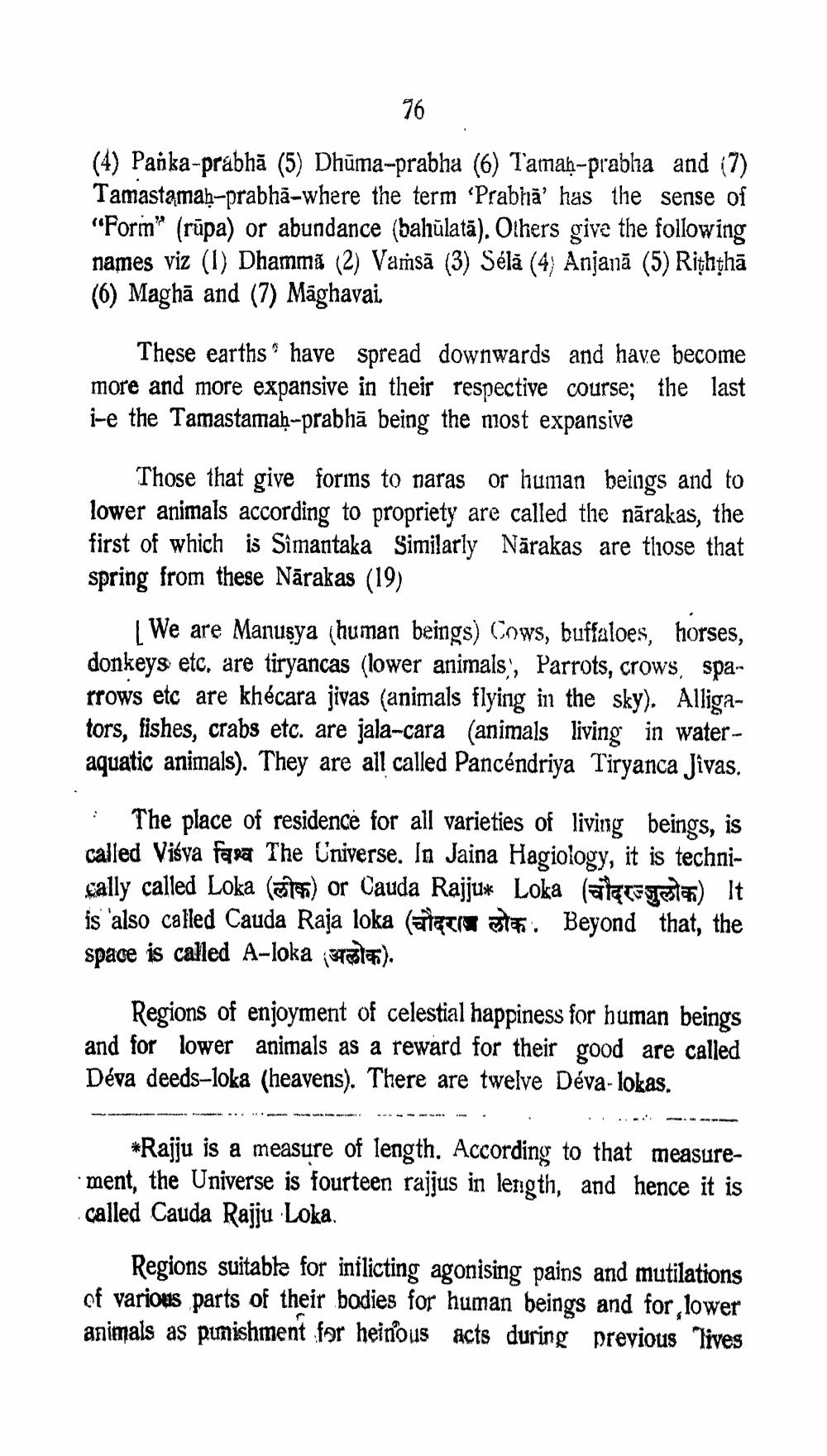________________
76
(4) Panka-prabhā (5) Dhūma-prabha (6) Tamah-prabha and (7) Tamastamah-prabhā-where the term 'Prabhä' has the sense of "Porin" (rūpa) or abundance (bahūlatā). Others give the following names viz (1) Dhamma (2) Vamsā (3) Séla (4) Anjana (5) Riththā (6) Maghā and (7) Māghavai.
These earths have spread downwards and have become more and more expansive in their respective course; the last i-e the Tamastamaḥ-prabhā being the most expansive
Those that give forms to naras or human beings and to lower animals according to propriety are called the nārakas, the first of which is Sîmantaka Similarly Nārakas are those that spring from these Nārakas (19)
( We are Manusya (human beings) Cows, buffaloes, horses, donkeys etc. are tiryancas (lower animals, Parrots, crows, sparrows etc are khécara jivas (animals flying in the sky). Alligators, fishes, crabs etc. are jala-cara (animals living in water - aquatic animals). They are all called Pancéndriya Tiryanca Jivas.
: The place of residence for all varieties of living beings, is called Viśya fara The Cniverse. In Jaina Hagiology, it is technically called Loka (19) or Cauda Rajjux Loka (at ) It is also called Cauda Raja loka (niaciu stafi Beyond that, the space is called A-loka ().
Regions of enjoyment of celestial happiness for human beings and for lower animals as a reward for their good are called Déva deeds-loka (heavens). There are twelve Déva-lokas.
--------. . .... -------- *Rajju is a measure of length. According to that measurement, the Universe is fourteen rajjus in length, and hence it is called Cauda Rajju Loka.
Regions suitable for inflicting agonising pains and mutilations of various parts of their bodies for human beings and for lower animals as punishment for heinous acts during previous "Tives




